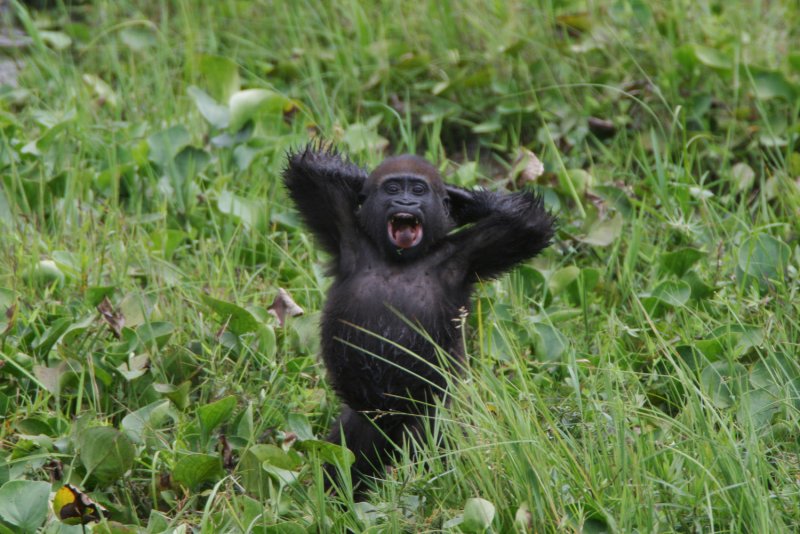A baby western lowland gorilla sits in the grass in an undated photo taken in the Republic of Congo. New research showed the gut microbiome of great apes fluctuate seasonally as chimps and gorillas adapt their diet to the foods that are available. File Photo by Thomas Breuer/UPI |
License Photo
May 3 (UPI) -- The gut microbiome of great apes fluctuates seasonally, a new survey of gorilla and chimpanzee feces showed. The findings, published this week in the journal Nature Communications, could help scientists better understand the evolution of the human gut microbiome.
Scientists collected and analyzed fecal samples from gorillas and chimpanzees living in the Sangha region of the Republic of Congo. Their survey showed the gut microbiome, the community of microbes living in the intestines of the great apes, took on a markedly different composition during the summer dry period, when the apes' diet adapts to accommodate the abundance of fruits. During the wet season, apes primarily dine on leaves and bark.
Similar shifts in the makeup of gut bacteria have been observed in the Hadza, a hunter-gatherer people of Tanzania. The diet of the Hadza people is also largely dictated by seasonal availability.
The diets of most humans in modern industrialized society are relatively consistent all year long. Globalized food production systems allow for the consistency as local grocery stores are stocked with a full spread of produce all year long.
"While our human genomes share a great deal of similarity with those of our closest living relatives, our second genome -- the microbiome -- has some important distinctions, including reduced diversity and the absence of bacteria and archaea that appear to be important for fiber fermentation," Allison L. Hicks, a researcher at the Center for Infection and Immunity at Columbia University's Mailman School of Public Health, said in a news release. "Understanding how these lost microbes influence health and disease will be an important area for future studies."
Each year, the bacteria that help apes break down fibrous plant material is replaced by microbes that consume the mucous that accumulates when apes eat lots of fruit.
"The fact that our microbiomes are so different from our nearest living evolutionary relatives says something about how much we've changed our diets, consuming more protein and animal fat at the expense of fiber," said Brent Williams, an assistant professor of epidemiology at the Center for Infection and Immunity. "Many humans may be living in a constant state of fiber deficiency. Such a state may be promoting the growth of bacteria that degrade our protective mucous layer, which may have implications for intestinal inflammation, even colon cancer."















